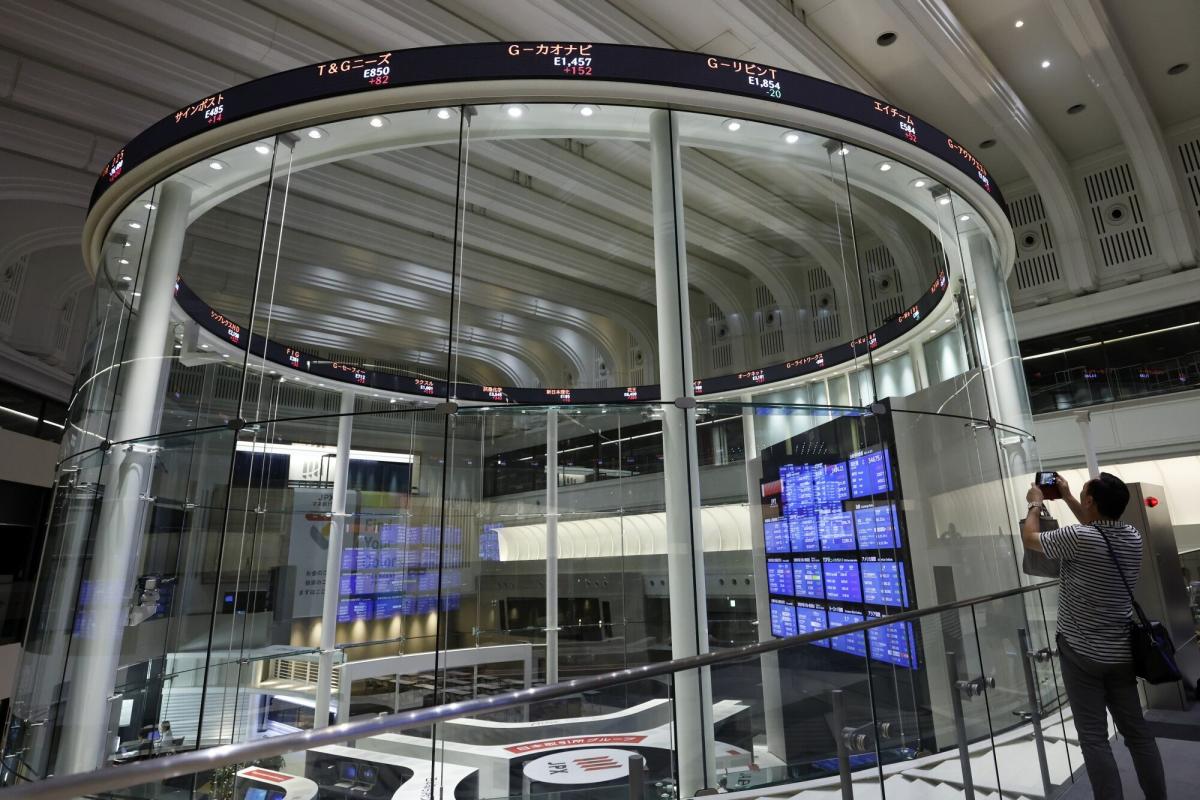(Bloomberg) — Global shares rose and the yen fell after the Bank of Japan’s deputy governor said it won’t raise interest rates if markets are unstable, supporting a recovery after the recent global meltdown.
Most Read from Bloomberg
The Euro Stoxx 50 futures advanced 1.3%, alongside gains in US futures. That followed a strong session in Asia, where Japanese stocks led a broad rally after the yen fell over 2% against the dollar, reflecting the benefits of a cheaper currency for an export-oriented economy.
An Asian equities gauge gained 1.5%. Treasury yields and a Bloomberg dollar index edged higher too.
The latest return of risk appetite came after BOJ Deputy Governor Shinichi Uchida sent a strong dovish signal by saying the central bank’s rate path will shift if the economic outlook is impacted by markets. His comments emerged in the wake of efforts by Japan’s government and central bank to show a united front to restore calm to markets, amid growing criticism of last week’s abrupt monetary tightening.
Uchida was seeking to reassure markets after the BOJ unexpectedly tightened policy on July 31 and indicated a more aggressive hiking path than some traders had expected. The rate hike set off a three-day tumble in Japanese shares, a surge in the yen and a rapid unwinding of the currency carry trade that dragged down risk assets globally.
“It seems that the BOJ is reasonably content with USD/JPY and JGB yield levels at the moment, and we suspect that the central bank will be keen to keep the markets around these levels,” said Homin Lee, senior macro strategist at Lombard Odier Singapore Ltd. But, “his comments still suggest that another hike is possible if markets stabilize and the economy rebounds as the central bank projected in its latest macroeconomic forecasts.”
The BOJ may still hike in December or early 2025, he added.
The Nikkei and the Topix indexes slid into a bear market on Monday after they dropped 20% from their July peaks. The Nikkei’s implied volatility touched its highest level since 2008 at the start of the week.
“Uchida-san’s comments can bring some stability to the Japanese equity market for now, but it cannot take the focus away from US economic data and recession concerns,” said Charu Chanana, head of currency strategy at Saxo Markets. “Putting in fresh carry trades remains tough in this environment of higher volatility and nervousness about the US economy.”
Investors using the cheap currency to fund investments in higher-yielding assets were caught out when the yen surged 11% over the past month.
The Mexican peso, a carry trade target that tumbled after the BOJ rate hike, also rose over 1% against the dollar Wednesday. The Australian dollar and its New Zealand counterpart both advanced too.
The S&P 500 and Nasdaq 100 rose on Tuesday — following a Japan-led rebound in Asia — with both climbing 1% after a global meltdown. Wall Street’s “fear gauge” — the VIX — saw its biggest plunge since 2010. Traders also moderated expectations of Federal Reserve rate cuts this year, with swaps predicting around 105 basis points of easing, versus as much as 150 basis points on Monday.
Treasury 10-year yields rose two basis points in Asian trading after jumping 10 basis points to 3.89% Tuesday. Oil rose.
Elsewhere, Chinese shares rose modestly after four consecutive days of losses, following a mixed bag of trade data.
In the corporate world, Super Micro Computer Inc. fell more than 10% in extended trading after reporting quarterly revenue and profit that missed analysts’ estimates.
“We would characterize the recent market pullback as a textbook correction, after months of low volatility so far in 2024,” said Carol Schleif at BMO Family Office. “The lack of volatility before the past few weeks is unusual, and our current correction is actually quite normal, especially during August, which historically is a volatile time for markets given lighter trading volumes and the summer doldrums.”
A semblance of calm returned to markets on Tuesday, following a pullback fueled by weak economic data, underwhelming tech results, stretched positioning and poor seasonal trends. The wall of worry the market built up over the past few days drove the S&P 500 to the brink of a correction, with a drawdown of about 8.5% from the highs.
Key events this week:
-
US consumer credit, Wednesday
-
Germany industrial production, Thursday
-
US initial jobless claims, Thursday
-
Fed’s Thomas Barkin speaks, Thursday
-
China PPI, CPI, Friday
Some of the main moves in markets:
Stocks
-
S&P 500 futures rose 0.8% as of 6:42 a.m. London time
-
Japan’s Topix rose 2.9%
-
Australia’s S&P/ASX 200 rose 0.4%
-
Hong Kong’s Hang Seng rose 1.9%
-
The Shanghai Composite rose 0.5%
-
Euro Stoxx 50 futures rose 1.1%
-
Nasdaq 100 futures rose 1%
-
Australia’s S&P/ASX 200 rose 0.4%
Currencies
-
The Bloomberg Dollar Spot Index rose 0.2%
-
The euro fell 0.2% to $1.0910
-
The Japanese yen fell 2% to 147.27 per dollar
-
The offshore yuan fell 0.3% to 7.1836 per dollar
-
The Australian dollar rose 0.5% to $0.6553
-
The British pound rose 0.1% to $1.2705
Cryptocurrencies
-
Bitcoin rose 0.7% to $56,942.75
-
Ether rose 1.1% to $2,517.47
Bonds
-
The yield on 10-year Treasuries advanced two basis points to 3.91%
-
Japan’s 10-year yield declined one basis point to 0.875%
-
Australia’s 10-year yield advanced seven basis points to 4.09%
Commodities
This story was produced with the assistance of Bloomberg Automation.
Most Read from Bloomberg Businessweek
©2024 Bloomberg L.P.







